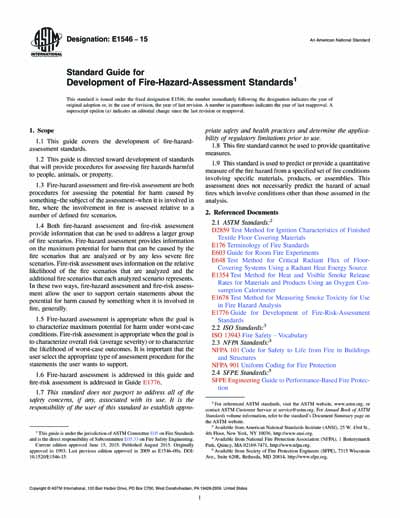Historical
ASTM E1546-15
Standard Guide for Development of Fire-Hazard-Assessment Standards
1.1 This guide covers the development of fire-hazard-assessment standards.
1.2 This guide is directed toward development of standards that will provide procedures for assessing fire hazards harmful to people, animals, or property.
1.3 Fire-hazard assessment and fire-risk assessment are both procedures for assessing the potential for harm caused by something–the subject of the assessment–when it is involved in fire, where the involvement in fire is assessed relative to a number of defined fire scenarios.
1.4 Both fire-hazard assessment and fire-risk assessment provide information that can be used to address a larger group of fire scenarios. Fire-hazard assessment provides information on the maximum potential for harm that can be caused by the fire scenarios that are analyzed or by any less severe fire scenarios. Fire-risk assessment uses information on the relative likelihood of the fire scenarios that are analyzed and the additional fire scenarios that each analyzed scenario represents. In these two ways, fire-hazard assessment and fire-risk assessment allow the user to support certain statements about the potential for harm caused by something when it is involved in fire, generally.
1.5 Fire-hazard assessment is appropriate when the goal is to characterize maximum potential for harm under worst-case conditions. Fire-risk assessment is appropriate when the goal is to characterize overall risk (average severity) or to characterize the likelihood of worst-case outcomes. It is important that the user select the appropriate type of assessment procedure for the statements the user wants to support.
ASTM International [astm]

